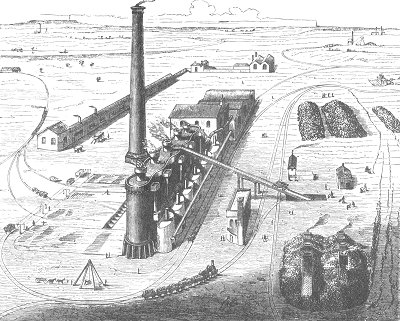SAMUEL GRIFFITHSLife in London c.1866 to 1881There is no evidence to show that Griffiths was actually dishonest, even if some thought he sailed close to the wind. But he evidently overreached himself, for, as Gale tells us, once more he filed his petition in bankruptcy, and this time he left his native district for good, going first to Winchelsea, Sussex, for a short time, and then to London where he again did some trade as an iron and metal merchant. But mainly he took his Iron Trade Circular with him to London, re-named it the London Iron Trade Exchange in 1873, and published it until he died, on 24 May 1881. The Exchange was carried on for some years afterwards by Samuel’s son, Herbert W. Griffiths
Indeed as Gale points out the book shows more enthusiasm than method for, although it is supposed to be an account, geographically organised, of the main iron manufacturers, some works are dealt with in what is, geographically, entirely the wrong place. Some bits of information in the book are now known to be wrong but it still remains one of the most comprehensive accounts of the trade and the pictures in it are excellent. The book also shows that Griffiths travelled extensively round the country and the fact that he gained admittance to so many works and was given so much information indicates that he had a good reputation in the iron trade. The appendices provide lists of all the London iron merchants, a list of all the blast furnaces in the UK, and much else besides. Amongst these appendices is a page in which Griffiths observes that "Iron is popular with the profession as a tonic" and he then lists "the most popular preparations" based on iron and recognised in the British Pharmacopoeia. To this he adds a note that "Steel Drops, sold in the druggists' shops, is, of course made of Iron, and is a most invaluable medicine". Which satisfactorily turns the wheel back to his own early life. |
 Parkfields Furnaces as shown in The Guide to the Iron
Trade.
Parkfields Furnaces as shown in The Guide to the Iron
Trade.
